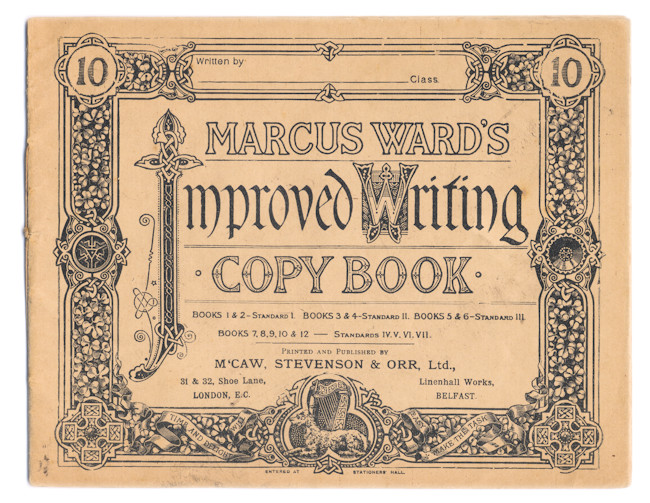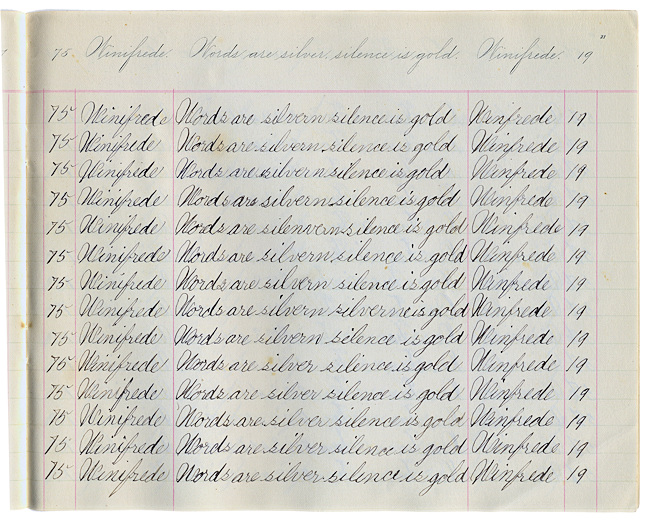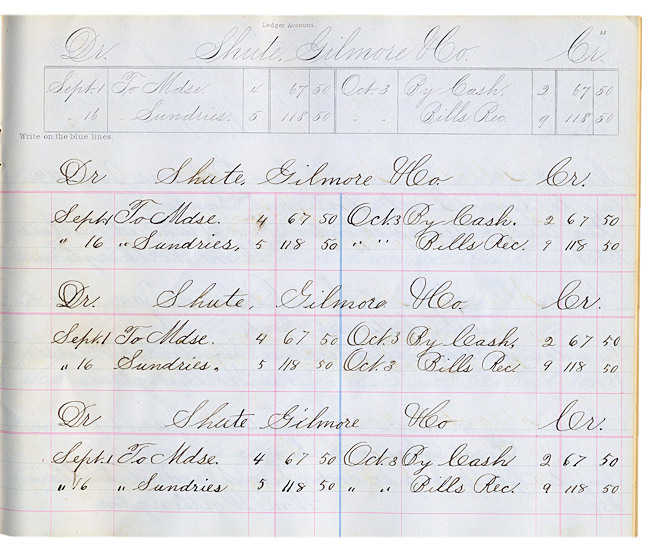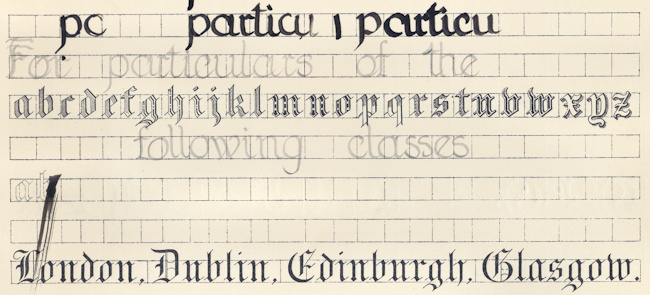 |
|
| News About Us Membership Events Links |
|
Copy BooksCopy books were an essential tool in the education system during the Victorian era in the English-speaking world. They were widely used in schools to teach children proper handwriting, penmanship, and literacy skills. The Victorians placed a strong emphasis on discipline, order, and neatness, and copy books played a significant role in instilling these values.
The content of Victorian copy books varied, covering a range of subjects such as letters of the alphabet, words, phrases, and even longer passages. In addition to improving handwriting, the copy books were also used to teach grammar, spelling, punctuation, and composition. Students were encouraged to replicate the words and sentences with precision and accuracy, reinforcing their understanding of language and improving their penmanship simultaneously.
They were also employed by adults who wished to improve their handwriting or refine their calligraphy skills. As writing became more important for personal and professional communication, copy books provided a practical and structured means of self-improvement. Copy books served as both instructional tools and repositories of a pupils’ progress. They were designed to develop a graceful style of penmanship and under the eye of a competent teacher to give instruction in position of the body, arms, hand and most importantly directions for holding the pen.
If a pupil made a mistake while writing in their copy book, such as a blot from an ink spill or a spelling error, it would mar the otherwise clean pages and reflect poorly on their diligence and attention to detail. Over time, the phrase "blot your copy book" evolved beyond its literal context of writing errors and became a metaphor for any action or behaviour that could stain one's reputation or undo previous accomplishments. People use this expression as a gentle reminder to be mindful of their actions and avoid making mistakes that could negatively impact their standing in society, professionally, or personally. |
|
|
Home | News | About Us | Membership | Events | Links | Contact | Item of the month | Articles |
| Copyright © The Ephemera Society 2025. All Rights Reserved. |



